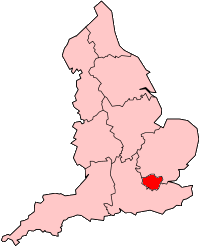| Barking Power Station | |
|---|---|
 Barking Reach Power Station Viewed from the south in October 2007 | |
 | |
| Country | England |
| Location | Greater London |
| Coordinates | 51°31′16″N0°08′49″E / 51.5210°N 0.1470°E |
| Status | Decommissioned and demolished |
| Construction began | 'A' 1925-28; 'B' 1931-39; 'C' 1952-54; Barking Reach 1992-95 |
| Commission date | 'A' 1925; 'B' 1933; 'C' 1954; Barking Reach 1995 |
| Decommission date | 'A' 1969; 'B' 1976; 'C' 1981; Barking Reach 2018 |
| Owner | As operator |
| Operators | Barking Town Urban District Council (1897-1927) County of London Electric Supply Company (1925-1948) British Electricity Authority (1948-1955) Central Electricity Authority (1955-1957) Central Electricity Generating Board (1957-1981) Thames Power Services (1995-present) |
| Thermal power station | |
| Primary fuel | Coal Oil Natural gas |
| Tertiary fuel | Coal |
| Chimneys | 'A' 10; 'B' 4; 'C' 2; Barking Reach 2 |
| Cooling towers | None |
| Cooling source | River water |
| Power generation | |
| Units operational | 'A' 3 × 40 MW & 1 × 36.75 MW; 'B' 4 × 75 MW; 'C' 3 × 77.5 MW; Barking Reach 1000 MW CCGT |
| Units decommissioned | All |
| Nameplate capacity | 220 MW & 144 MW |
| External links | |
| Commons | Related media on Commons |
grid reference TQ4893882469 | |
Barking Power Station refers to a series of power stations at various sites within the London Borough of Barking and Dagenham in east London. The original power station site, of the coal-fired A, B and C stations, was at River Road, Creekmouth, on the north bank of the River Thames. These stations were decommissioned by 1981 and were subsequently demolished. The later gas-fired power station (originally generally known as Barking Reach Power Station) was built further down the Thames near Dagenham Dock in the early 1990s. The site of the former power stations is being redeveloped as Barking Riverside.


